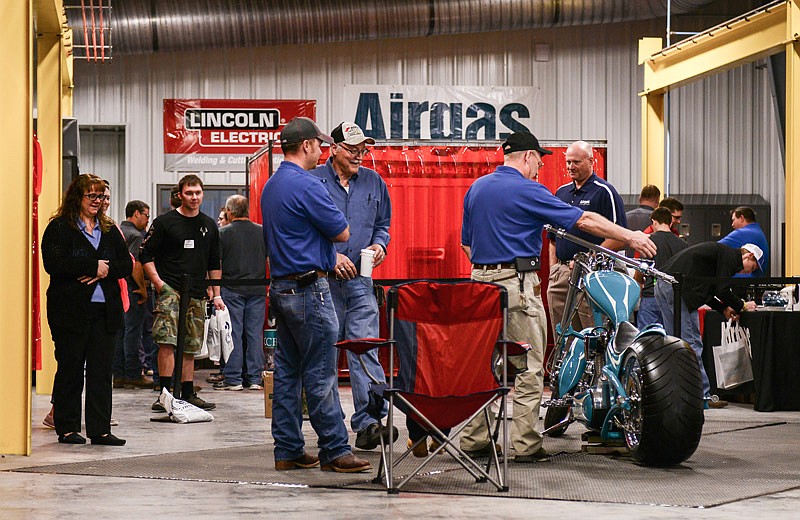The State Technical College of Missouri in Linn hosted an open house Saturday to showcase programs, including a new welding center, to prospective students and their families.
About 1,100 people visited campus Saturday, as of the last available count, according to State Tech's Director of Marketing Brandon McElwain.
The welding center will have its own open house April 10, but it welcomed the streams of visitors to the campus on Saturday, as did the other programs to display high-tech but perhaps still largely unknown resources.
State Tech President Shawn Strong said the goal for the school is to "move beyond being the best-kept secret in Missouri." He explained a lot of people drive by the campus without really knowing what's there, but when people do walk around "I hear a lot of wows."
Strong has been in his position since July. He explained a technical education is beyond only learning how to be an automotive technician now. "We're so much more than that," he said.
State Tech offers more than 35 programs to earn an Associate of Applied Science degree or certificate. The nuclear technology program is available at the Advanced Technology Center in Mexico, and the advanced manufacturing technician program is at the Lewis and Clark Career Center in St. Charles.
Strong pointed out the new welding center is about three times the size of the previous facility and features state-of-the-art equipment including a bridge crane, a plasma table and a robotic welder - a mechanical, automated arm in motion Saturday but not actively welding anything.
As with many industries, Strong said a focus for welding students in the program is "how can we do more with less" to help employers be profitable.
Even with some automated technology though, there's plenty of demand for human welders, too. The field is "a hot area right now," Strong said. No pun intended.
With the new 10,000 square feet of space, the program at State Tech will be able to double the amount of welders it trains.
Students already in the program at the time of the building's construction helped put together the new welding booths. McElwain also said partnerships with Lincoln Electric and Airgas were critical to the new facility.
With the tools and equipment they supply, "they create the welders," he said.
Within two years, McElwain said State Tech also hopes to have open a new health sciences facility. It will house the school's dental assisting technology, medical radiologic technology, practical nursing technology and physical therapist assistant programs under one roof.
Keeping in-flight aircraft well above rooftops is probably the most important goal of aviation maintenance, and State Tech has a program in that, as well. The 360-acre campus in Linn features a public airport with an aviation fuel station, though department chair and instructor Robert Grosvenor clarified "we don't have flight instruction."
All the planes and helicopters in and around the program's hangar bay on Saturday don't fly, Grosvenor said, but they are all "ground-runnable." That means students can still study operational components, like jet engines.
Grosvenor said State Tech had its first class of aviation program students in 1988. The skills aviation students learn are transferable well beyond aircraft too, he said.
With experience working on the complex electrical, hydraulic and heating, ventilation and cooling systems on aircraft, Grosvenor said his students can apply their skills to working on other mechanical systems like trains and amusement park rides.
There is still a shortage of pilots and mechanics though, he said, adding "everybody out there is looking for people."
He said the current aviation maintenance class has 31 students in it, though it could accommodate upwards of 40 or 50.
In the fall of 2015, State Tech had about 1,274 students enrolled in total - 96 percent of whom were Missouri residents.

